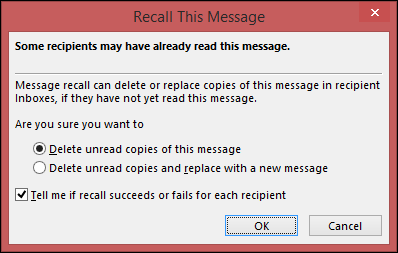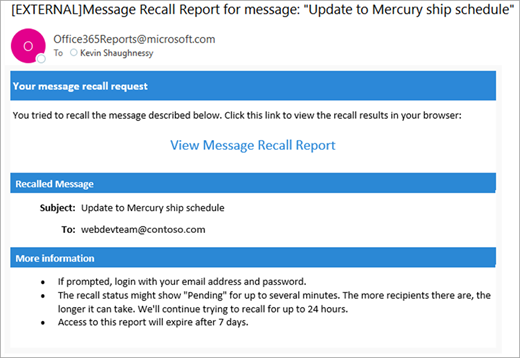What is a Microsoft Group
| View file | ||||||
|---|---|---|---|---|---|---|
|
Microsoft Group are a way for people to collaborate and 365 Group provides a way for teams to work together more efficiently and effectively, by bringing together various Microsoft tools and services into a single platform. Microsoft Groups allows people to collaborate on projects, and files, schedule meetings and communicate with each other using various Microsoft applications, such as Outlook, Teams, and SharePoint. Microsoft 365 Groups allow users to work together on projects, share files, and schedule meetings. They can also be used also provide the ability to manage permissions and access to resources, such as shared calendars and OneDrive for Business.
In a nutshell, Microsoft 365 Groups provide a way for teams to work together more efficiently and effectively, by bringing together various Microsoft tools and services into a single platform.
...
When you create a group in Outlook, you can manage the group's shared calendar, shared mailbox, and other resources. You can also use the group's email address to communicate with other members of the group.
When you create a team in Teams, a Microsoft 365 Group is automatically created for the team. This group includes a shared calendar, a shared mailbox, and a SharePoint site where team members can collaborate on files. If you create a Microsoft 365 Group in Outlook, you can use it with Teams by adding the group to a new or existing team. This way, you can access the group's shared resources directly from Teams.
Similarly, if you create a new team in Teams, you can create a new Microsoft 365 Group that includes a shared mailbox and calendar for the team to use. You can also invite people from your Outlook contacts to join the team.
In summary, Microsoft 365 Groups allow you to manage membership and access to shared resources, and both Outlook and Teams can use these groups to help people work together more effectively.
Create a group on Outlook
Here are the steps to create a group in Outlook:
Open Outlook on your computer.
Click on the "Home" tab in the ribbon.
| View file | ||||||
|---|---|---|---|---|---|---|
|
Click on the "New Items" button.
Select "More Items" and then "Group" from the drop-down menu.
| View file | ||||||
|---|---|---|---|---|---|---|
|
In the "Group Name" field, enter a name for the group.
In the "Group Description" field, enter a brief description of the group's purpose.
In the "Members" field, enter the email addresses of the people you want to invite to the group. You can also click on the "Add Members" button to browse your contacts or address book.
Choose your group options by clicking the "Group Options" button. You can choose to make the group public or private, and you can specify who can post messages to the group.
Click "OK" to create the group.
That's it! Once you've created the group, you can manage its settings, add or remove members, and send messages to the group just like you would with any other email message.
...
In the left navigation pane, click on "Groups" at the bottom.
Click on the "New Group" button on the top left.
Choose "Create a group".
Select "From a team or group" and choose the desired team or SharePoint group from the list.
Follow the prompts to finish creating the group.
Once you have created the group in Outlook, you should be able to see the group's shared mailbox and calendar in Outlook. You can also send emails to the group's email address, and the emails will be visible to all members of the group in Teams or SharePoint.
...
| View file | ||||||
|---|---|---|---|---|---|---|
|
...
| View file | ||||||
|---|---|---|---|---|---|---|
|
...
| View file | ||||||
|---|---|---|---|---|---|---|
|
...
To recall a message, open the message in your Sent Items folder, click on the "Actions" button in the "Message" tab of the ribbon, and choose "Recall This Message". Keep in mind that this option may not always work, and there are some circumstances in which the message cannot be recalled.
If you cannot recall the message, you can send a follow-up email to the group explaining the mistake and correcting any errors. It's always a good idea to double-check the recipients before sending an email to avoid accidental mistakes. Additional information about Microsoft groups is available: https://learn.microsoft.com/en-us/microsoftteams/office-365-groups
In this article:
| Table of Contents | ||||||
|---|---|---|---|---|---|---|
|
How are groups created in Outlook?
A group is automatically created in Outlook when a Team is created within the Microsoft Teams application. (To request a Team to be created, please complete the request form.)
A group can also be created after requesting a distribution list. To request a distribution list, complete the request form. Under topic select New Mailing List -> Distribution List.
A distribution list (DL) is similar to a mailing list. They are used to send emails to a group of people. With a DL, members of the list cannot reply to the DL’s to send emails to people in the group.
![]() If an email is moved from your personal mailbox into an Outlook group, the contents of the email will then be available and accessible to everyone within that group.
If an email is moved from your personal mailbox into an Outlook group, the contents of the email will then be available and accessible to everyone within that group. ![]() For example, if an email is moved from your personal inbox to the Green Office group, all members of the Green Office group can view that email. When moving that email to the group, the following prompt will appear.
For example, if an email is moved from your personal inbox to the Green Office group, all members of the Green Office group can view that email. When moving that email to the group, the following prompt will appear.
If you want to move the email to the group, select OK.
If you would not want to move the email to the group, select Cancel.
...
| Note |
|---|
If you unintentionally move an email to a group within Outlook, it can be recalled by following the instructions to recall and recover the email below. |
How to recall and recover an email sent to a group in Outlook
To recall and replace a message
Note: Emails cannot be recalled within the Outlook web app.
Open the Outlook desktop app and on the left panel, choose the Sent Items folder.
Double-click to open the message you want to recall in a new window.
If you have the Classic Ribbon, from the Message tab, select Actions > Recall This Message.
If you have the Simplified Ribbon, select the Message tab and select (...). Select Actions and then choose Recall This Message.
Select Delete unread copies of this message or Delete unread copies and replace with a new message, and then select OK.
If you’re sending a replacement message, compose the message, and then select Send.
To check on the recall of a message
After submitting a recall request, you will get a status update via an email notification with the subject "Message Recall Report for message [message subject]". The time to receive status updates about the recalled email can vary. For a large number of recipients (i.e. thousands), it can take up to 30 minutes for the email to be recalled from all recipient’s inboxes.
Select the View Message Recall Report link from the email notification to view the report in your browser. If you’re prompted, log in with your mailbox credentials to view the report.
The message recall report will indicate whether
the email has been recalled
is currently in progress of being recalled
or if the recall has failed.
| Info |
|---|
Recall actions are typically quick, regardless of how many recipients are involved. However, if the recall request can not be executed right away for some reason (e.g., the recipient’s mailbox is temporarily unavailable) it'll continue to retry for up to 24 hours before marking the recall as failed. this failed status can be viewed by clicking onthe Message Recall Report. |
Related articles
| Filter by label (Content by label) | ||||||||||||||||
|---|---|---|---|---|---|---|---|---|---|---|---|---|---|---|---|---|
|
| Info |
|---|
Need help?Contact the IST Service Desk online or 519-888-4567 ext. 44357. |
| Tip |
|---|
Article feedbackIf you’d like to share any feedback about this article, please let us know. |



